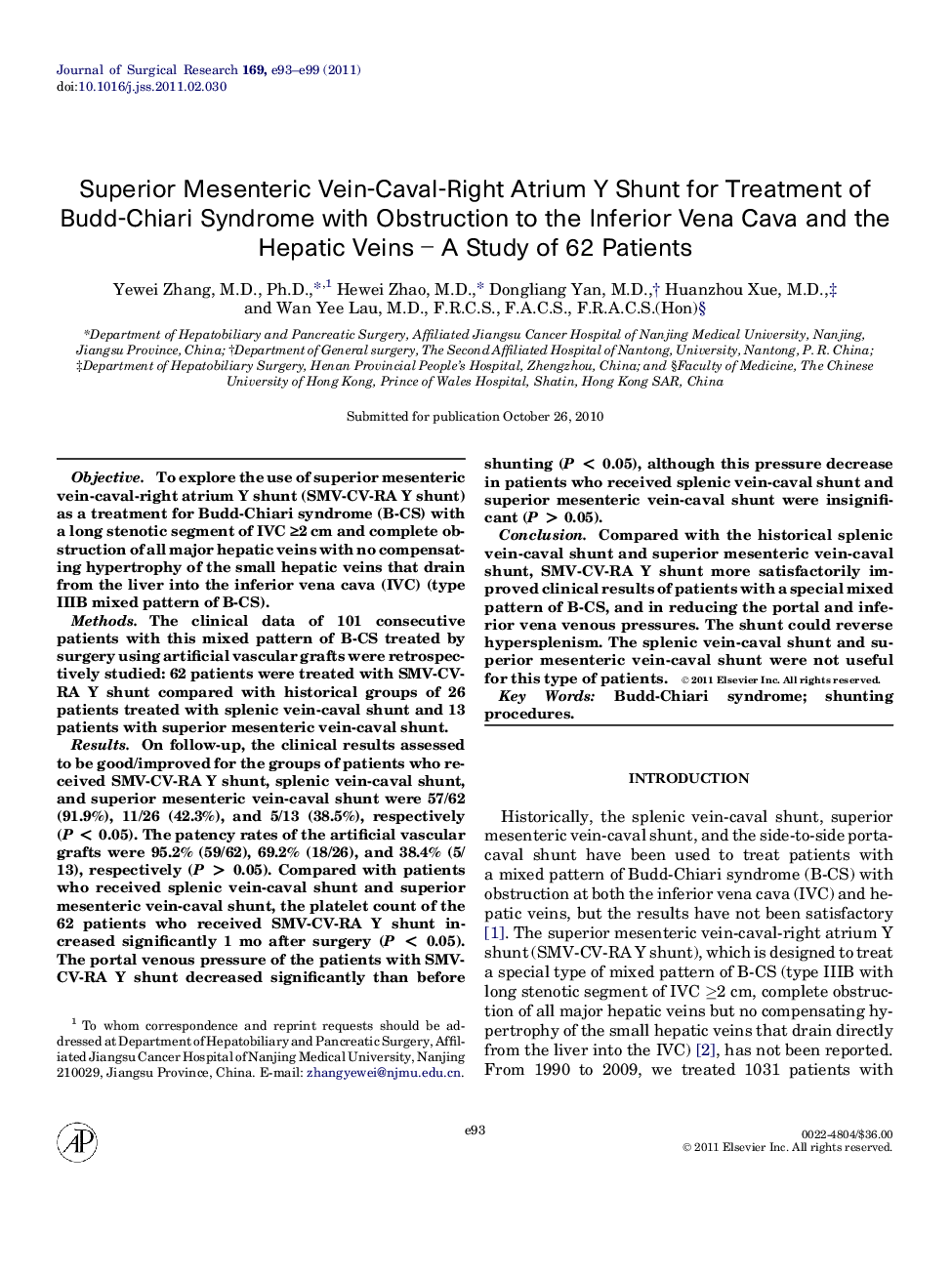| Article ID | Journal | Published Year | Pages | File Type |
|---|---|---|---|---|
| 4302257 | Journal of Surgical Research | 2011 | 7 Pages |
ObjectiveTo explore the use of superior mesenteric vein-caval-right atrium Y shunt (SMV-CV-RA Y shunt) as a treatment for Budd-Chiari syndrome (B-CS) with a long stenotic segment of IVC ≥2 cm and complete obstruction of all major hepatic veins with no compensating hypertrophy of the small hepatic veins that drain from the liver into the inferior vena cava (IVC) (type IIIB mixed pattern of B-CS).MethodsThe clinical data of 101 consecutive patients with this mixed pattern of B-CS treated by surgery using artificial vascular grafts were retrospectively studied: 62 patients were treated with SMV-CV-RA Y shunt compared with historical groups of 26 patients treated with splenic vein-caval shunt and 13 patients with superior mesenteric vein-caval shunt.ResultsOn follow-up, the clinical results assessed to be good/improved for the groups of patients who received SMV-CV-RA Y shunt, splenic vein-caval shunt, and superior mesenteric vein-caval shunt were 57/62 (91.9%), 11/26 (42.3%), and 5/13 (38.5%), respectively (P < 0.05). The patency rates of the artificial vascular grafts were 95.2% (59/62), 69.2% (18/26), and 38.4% (5/13), respectively (P > 0.05). Compared with patients who received splenic vein-caval shunt and superior mesenteric vein-caval shunt, the platelet count of the 62 patients who received SMV-CV-RA Y shunt increased significantly 1 mo after surgery (P < 0.05). The portal venous pressure of the patients with SMV-CV-RA Y shunt decreased significantly than before shunting (P < 0.05), although this pressure decrease in patients who received splenic vein-caval shunt and superior mesenteric vein-caval shunt were insignificant (P > 0.05).ConclusionCompared with the historical splenic vein-caval shunt and superior mesenteric vein-caval shunt, SMV-CV-RA Y shunt more satisfactorily improved clinical results of patients with a special mixed pattern of B-CS, and in reducing the portal and inferior vena venous pressures. The shunt could reverse hypersplenism. The splenic vein-caval shunt and superior mesenteric vein-caval shunt were not useful for this type of patients.
